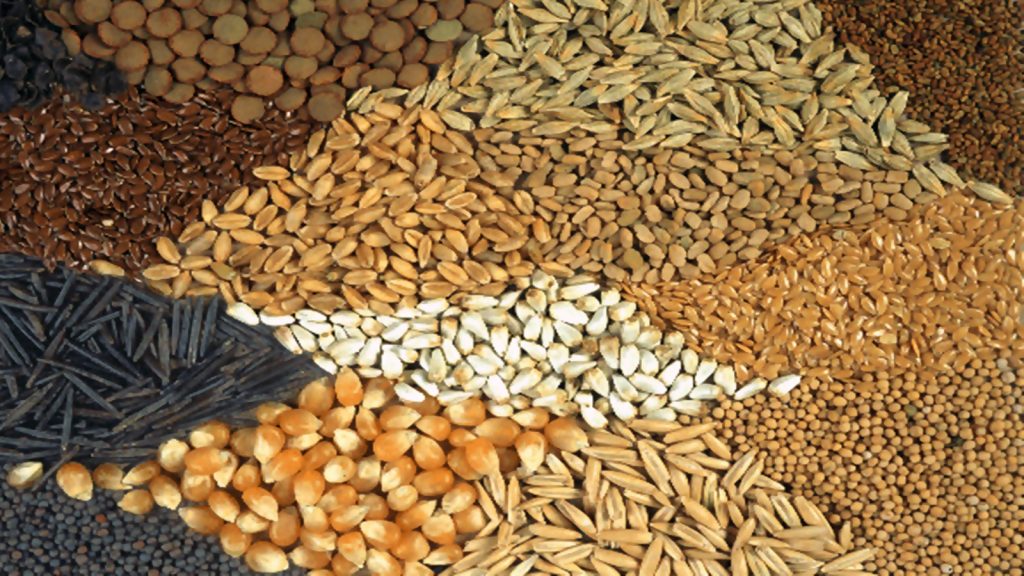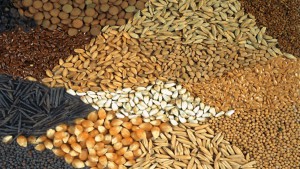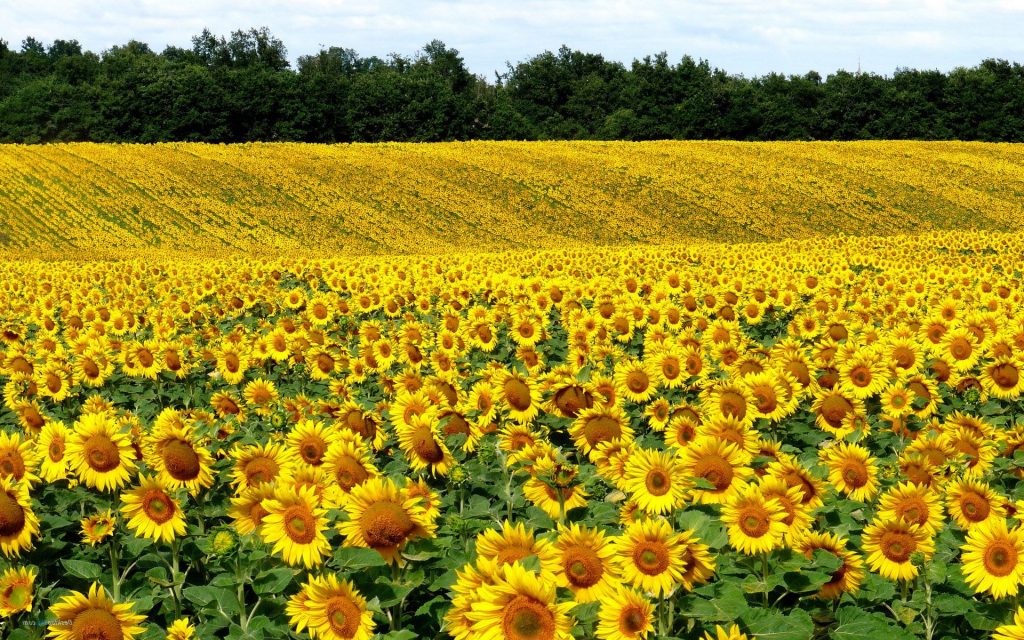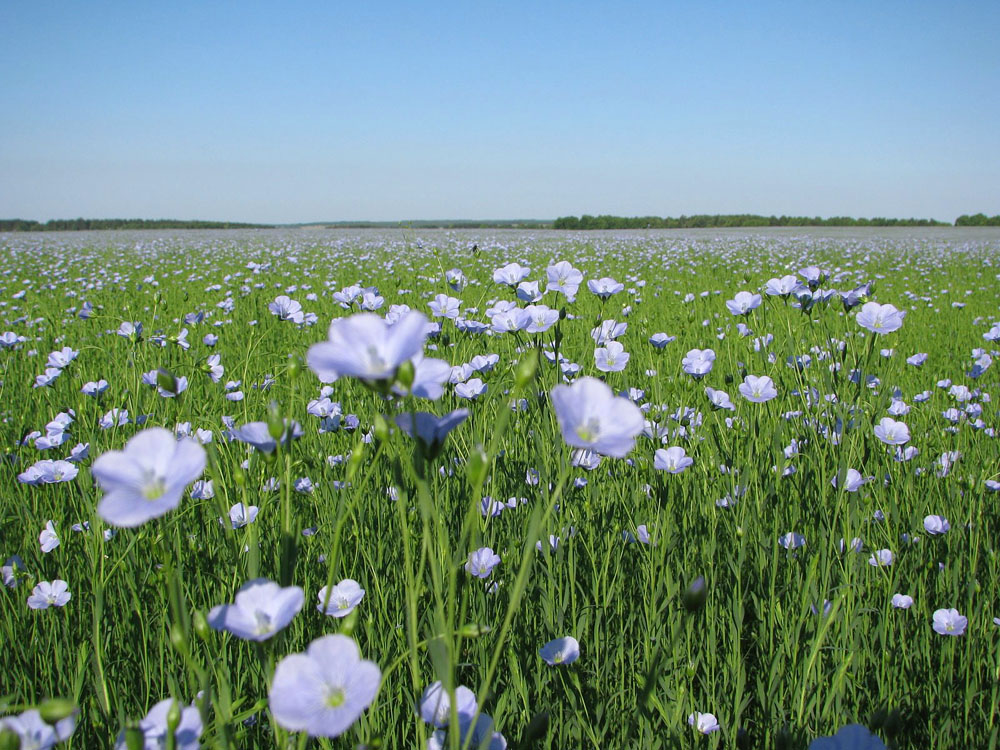When deciding which crop to grow, any farmer is guided by two main criteria - the actual ability to grow one or another type of plant in his fields and their profitability. The first criterion is determined by a combination of various factors, starting with climatic conditions and ending with the technical equipment of the enterprise. The second criterion is determined mainly by market conditions. Based on these two criteria, grains, as well as some industrial crops, are the most preferable for cultivation in Russia.
Importance of grain crops in modern Russia
The world's crop production is based on a group of grain crops, which account for the lion's share of the industry's output. In this sense, Russia is by no means an exception. In our country, about half of the sown area is annually allocated for wheat, rye, barley and other grains, which in itself indicates the importance of plants in this group.
Such popularity of cereals among Russian farmers is explained not only by suitable climatic conditions that allow them to be successfully grown in a significant part of the country, but also by the great economic importance of these plants. According to experts, each Russian annually eats about 120 kg of bread and pasta. Also, our fellow citizens eat a lot of cereals. In weight terms, these products account for from a quarter to a third of all products consumed by the average Russian. Thus, it is grain crops that form the basis of the diet of our compatriots, which is why the domestic demand for grain products in Russia is consistently high.
 Also, cereals are of great importance for the livestock industry, which is closely related to crop production. Many livestock feeds also contain large amounts of cereals. For example, about 70% of the grown barley and almost all of the oats are used to feed farm animals. Without a large-scale supply of cereals, livestock farmers would not be able to achieve their current productivity levels.
Also, cereals are of great importance for the livestock industry, which is closely related to crop production. Many livestock feeds also contain large amounts of cereals. For example, about 70% of the grown barley and almost all of the oats are used to feed farm animals. Without a large-scale supply of cereals, livestock farmers would not be able to achieve their current productivity levels.
All of the above means that the allocation of large areas of arable land for the cultivation of grain crops is an objective necessity. Both the food industry and animal husbandry are in dire need of these products. Having sown a field with wheat, rye or barley, a Russian agrarian can be completely sure that he can easily sell the grown crop.
Overview of the main grain crops in Russia
Russian farmers specialize in growing the following crops:

Without a doubt, the most important agricultural plant in Russia is wheat. About 45-50 million tons of wheat grain is grown annually on the fields of the country, the importance of which cannot be overestimated. Firstly, flour is made from it, which is used for baking bread and bakery products - almost a sacred product for a Russian person. Flour is also used for the manufacture of pasta and confectionery. Even in the production of vodka and beer, this cereal is often used. Finally, forage varieties of wheat are included in feed mixtures for livestock. According to many agrarians, wheat is the most profitable crop in Russian crop production, as it has fairly high profitability rates, is relatively unpretentious to weather conditions, and is easy to grow.
 The second most grown crop is barley. Great popularity is provided to him by excellent indicators of resistance to various weather conditions. Barley is so hardy and unpretentious that it is grown in almost all regions of the country up to the permafrost zones. About 30% of the barley grain grown by Russian farmers is used in the food industry. In particular, large volumes of these products are consumed by enterprises producing beer, pearl barley and barley groats. The remaining 70% of barley is fed to farm animals.
The second most grown crop is barley. Great popularity is provided to him by excellent indicators of resistance to various weather conditions. Barley is so hardy and unpretentious that it is grown in almost all regions of the country up to the permafrost zones. About 30% of the barley grain grown by Russian farmers is used in the food industry. In particular, large volumes of these products are consumed by enterprises producing beer, pearl barley and barley groats. The remaining 70% of barley is fed to farm animals.
Speaking about what kind of crops are in crop production, do not forget about rye. Historically, rye (“black”) bread was called bread in Russia. Today it is significantly inferior in popularity to "white" wheat, so rye is gradually losing its importance, and the area under it is steadily declining. In addition, rye grain is cheaper, and therefore less profitable. However, the demand for rye remains significant both in the food industry and in the production of alcohol and livestock.
Oats are an important crop for those regions of Russia where wheat does not do well. It is mainly grown for fodder, but some of the crop goes to the production of cereals.
Corn, millet, buckwheat, rice and other grain crops are also grown in Russia, but in much smaller volumes. Corn and millet are used both as fodder and food crops. Buckwheat and rice are used almost exclusively in the production of cereals.
Importance of industrial crops
 Industrial crops are commonly referred to as those types of agricultural plants that are grown in order to obtain technical raw materials from them. A classic example of such a crop is flax, from which fibers (raw materials for the textile industry) and non-edible vegetable oil are obtained. However, many industrial crops can also be grown as food crops. For example, potatoes are both the main vegetable crop and a source of starch. Thus, the division of crop production into food and industrial crops is rather conditional.
Industrial crops are commonly referred to as those types of agricultural plants that are grown in order to obtain technical raw materials from them. A classic example of such a crop is flax, from which fibers (raw materials for the textile industry) and non-edible vegetable oil are obtained. However, many industrial crops can also be grown as food crops. For example, potatoes are both the main vegetable crop and a source of starch. Thus, the division of crop production into food and industrial crops is rather conditional.
It is important to note that technical raw materials obtained as a result of plant processing are not necessarily used for the production of non-food products. Much more often, food products are obtained from industrial crops, which are used to impart certain taste or other qualities to ready-made food. For example, sugar derived from sugar cane and sugar beets is a popular sweetener, while vegetable oil, derived from dozens of different plants, is used for frying, salad dressing and other culinary purposes.
As a rule, the cultivation of industrial crops is a more complex production task than the cultivation of cereals. Plants of this group are more demanding on weather conditions and soil characteristics, which is why the list of industrial plants cultivated in Russia is quite small. Also, the cleaning process is associated with certain technical difficulties, since special harvesting machines are required. Finally, plants collected from the fields must be processed accordingly. While milling grain into flour is an extremely simple technical task, processing beets into sugar or flax into fibers will require much more effort and costly technology.
Considering the challenges involved in growing industrial crops, it is clear that the only reason for cultivating them is high profitability. It is the prospect of making a good profit that pushes agricultural enterprises to grow such demanding and fastidious plants.
Overview of the main industrial crops in Russia
This group covers a fairly wide range of plants that can be grouped into several subgroups:
- spinning;
- oilseeds;
- sucroses;
- dyeing;
- rubber plants.
 To date, Russian crop production has focused mainly on sugar, oilseeds and spinning non-food crops. At the same time, the subgroup of oilseeds is the most widely represented. The sunflower plays the first violin here, of course. It is he who accounts for two-thirds of the areas allocated for all industrial crops in Russia. Sunflower is grown for the sake of vegetable oil, which totally dominates in domestic cooking. On a much smaller scale, we grow other oilseeds - soybeans, rapeseed, mustard, flax curls - which together give only about 10% of Russia's vegetable oil.
To date, Russian crop production has focused mainly on sugar, oilseeds and spinning non-food crops. At the same time, the subgroup of oilseeds is the most widely represented. The sunflower plays the first violin here, of course. It is he who accounts for two-thirds of the areas allocated for all industrial crops in Russia. Sunflower is grown for the sake of vegetable oil, which totally dominates in domestic cooking. On a much smaller scale, we grow other oilseeds - soybeans, rapeseed, mustard, flax curls - which together give only about 10% of Russia's vegetable oil.
The main sugar-bearing crop in the world is sugar cane, but in our country there are no regions where the climate would be completely suitable for its cultivation. At the same time, a significant part of the Russian territory is suitable for growing sugar beet - the world's No. 2 sugar-bearing plant. Sugar is not just a sweet addition to tea or coffee - it is a strategic raw material for the food industry. It is used in the production of not only confectionery and sugary soft drinks, but also most other ready-to-eat foods, from baked goods to fruit juices. Some sugar is used in the chemical industry.
 Spinning industrial crops in crop production in Russia are represented by fiber flax, three-quarters of the world crop of which is grown in our country. For flax, the conditions of the Non-Black Earth Region are simply ideal, where it is rather cool and rainy in summer. The fiber obtained from flax is used for the production of linen fabrics, which are distinguished by great strength and attractive appearance. Linen yarn is considered more durable than cotton and wool. Only silk can compete with linen in this matter.
Spinning industrial crops in crop production in Russia are represented by fiber flax, three-quarters of the world crop of which is grown in our country. For flax, the conditions of the Non-Black Earth Region are simply ideal, where it is rather cool and rainy in summer. The fiber obtained from flax is used for the production of linen fabrics, which are distinguished by great strength and attractive appearance. Linen yarn is considered more durable than cotton and wool. Only silk can compete with linen in this matter.
